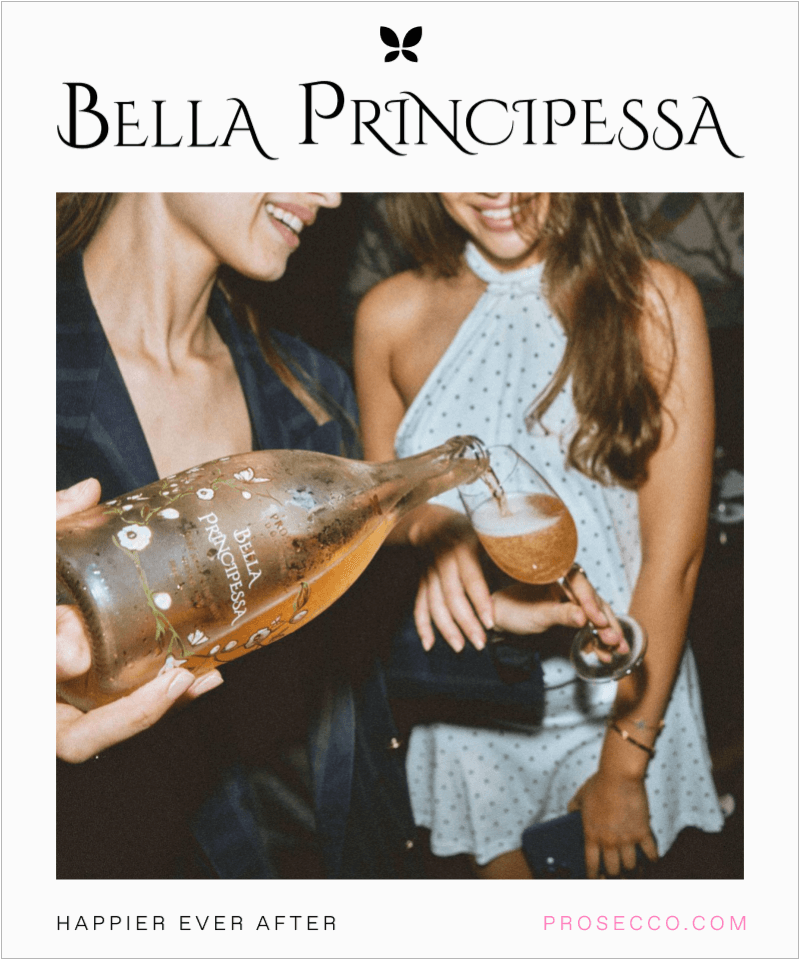The sparkling wine world is a tapestry of diverse styles, each offering a unique sensory experience. Among these, Prosecco Rosé has carved out its niche, standing apart from other sparkling wines with its distinct characteristics.
Understanding what sets Prosecco Rosé apart requires a closer look at its production methods, grape varietals, and terroir.
Prosecco Doc Rosé’s accessibility, exemplified by brands like Bella Principessa and Signorina Prosecco, makes it a popular choice for various occasions.
Grape Varietals and Regulatory Measures
A key factor that distinguishes Prosecco Doc Rosé is its varietal composition. To be labeled as Prosecco Rosé, the wine must comply with strict regulatory measures set by the Italian Government. It predominantly comes from Glera grapes, which constitute about 85% of the blend.
The remainder comprises Pinot Noir grapes, contributing around 10-15%. This blend is significant, as the inclusion of Pinot Noir, a red grape known for its depth and complexity, imparts unique flavors and a pink hue to the wine. In contrast, other sparkling rosés can be made from different grape selections and are not bound by such specific varietal requirements.
Production Methods: Charmat Method and Co-Fermentation
The Charmat method, a hallmark of Prosecco production, is also employed in making Prosecco Rosé. This method involves secondary fermentation in stainless steel tanks, setting it apart from other sparkling wines that may use the traditional method, where fermentation occurs in the bottle.
For Prosecco Rosé, Italian DOC guidelines stipulate a minimum of 60 days of fermentation in stainless steel tanks, a requirement not generally applicable to other sparkling rosés.
Additionally, Prosecco Rosé utilizes a unique technique of co-fermenting Glera and Pinot Noir grapes together. This process allows the aromas and flavors of the two grape varieties to intermingle, resulting in a rich and complex flavor profile.
This co-fermentation is atypical for most sparkling wines, where the base wine is usually made from white or red grapes and then blended with still red wine to achieve the rosé color and added flavor.
Flavor Profile: Fruity and Complex
Prosecco Rosé is celebrated for its light, fruity, and slightly sweet flavor profile, a hallmark of the Glera grape. Pinot Noir adds nuances of red fruit and berry flavors and a touch of earthiness and minerality.
This blend results in a refreshing and complex wine, offering a broader range of flavors compared to other sparkling rosés, which might emphasize different aspects of fruitiness, bubble size, and production methods.
Terroir: The Valdobbiadene Influence
The terroir of Valdobbiadene, where much of Prosecco Rosé is produced, plays a crucial role in its distinct character. Alpine and maritime air currents, along with sandy and pebbly glacial-era soils, provide ideal conditions for growing both Glera and Pinot Noir grapes.
This terroir imparts nuanced aromas and complex fruit flavors to the wine, contributing to Prosecco Rosé’s uniqueness among sparkling wines.
Conclusion
Prosecco Rosé stands out in the sparkling wine landscape due to its specific grape varietal requirements, production method, and unique flavor profile. The meticulous blend of Glera and Pinot Noir grapes, combined with the Charmat method of production and the distinct terroir of Valdobbiadene, culminates in a sparkling wine that is both delightful and distinctive.
This meticulous craftsmanship and regional specificity make Prosecco Rosé a choice for those seeking a sparkling wine that combines the freshness of Prosecco with the complexity and depth of rosé.











